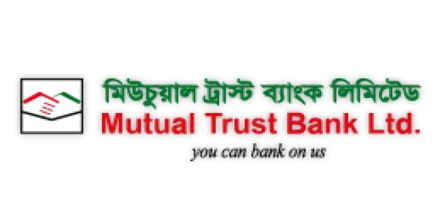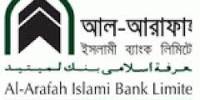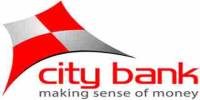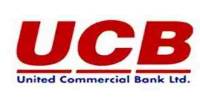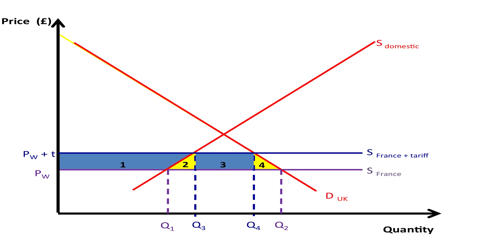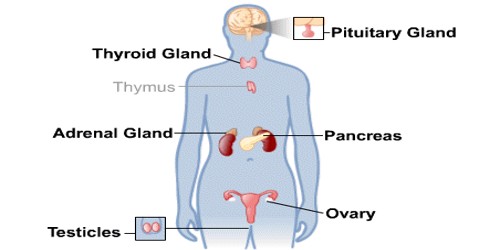The major objective of this report is to focus on foreign exchange and general banking activities of Mutual Trust Bank. Other objectives are focus on the brief description of foreign exchange process and know overall about Import Export procedure. Also briefly explain bank’s performance in foreign exchange risk. Finally identify major strength and weakness of Mutual Trust Bank in respect of other Bank and suggest some recommendation.
Objective of The Report
The objective of this report is to focus on foreign exchange and general banking activities and cope up with corporate working environment and also gathering knowledge from the expert who are leading and making strategic decisions to enhance the growth of a financial institution. The objective of this report can be summarized as follows:
Specific:
- To fulfill the academic requirement.
- To gain practical Knowledge in banking.
- To focus on the brief description of foreign exchange activities.
- To know deeply about Import-Export procedure.
- To examine bank’s performance in foreign exchange risk.
- To identify major strength and weakness of MTBL in respect of other Bank.
Background of the Organization
The company was incorporated on September 29, 1999 under the companies Act 1994 as public company limited by shares of carrying out all kinds of Banking Activities with Authorized capital of Take 38,00,000,000 ordinary shares of Tk, 100 each .The Company was also issued Certificate for Commencement of Business on the same day and was granted license on October 05, 1999 by Bangladesh Bank under the Banking Companies Act 1991 and started its banking operation on October 24, 1999. As envisaged in the Memorandum of Association and as licensed by Bangladesh Bank under the provisions of the Banking Companies Act 1991, the Company started its banking operation and entitled to carry out the following types of banking business:
- All types of commercial banking activities including Money Market operations.
- Investment in Merchant Banking activities.
- Investment in Company activities.
- Financiers, Promoters, Capitalists etc.
- Financial Intermediary Services.
- Any related Financial Services.
The Company (Bank) operates through its Head Office at Dhaka and 30 branches. The Company/ Bank carries out international business through a Global Network of Foreign Correspondent Banks.
Mutual trust Bank Ltd., since it’s beginning has attached more importance in technology integration. In order to retain competitive edge, investment in technology is always a top agenda and under constant focus. Keeping the network within a reasonable limit, our strategy is to serve the customers through capacity building across multi delivery channels. Our past performance gives an indication of our strength. We are better placed and poised to take our customers through fast changing times and enable them compete more effectively in the market they operates.
Goals & Objectives of Mutual Trust Bank
The objective of the Mutual Trust Bank Limited is specific and targeted to its vision and to position itself in the mindset of the people as ‘a bank with difference’. The objectives of the Mutual Trust Bank Limited are as follows:
- To mobilize the savings and channeling it out as loan or advance as the company approve.
- To establish, maintain, carry on, transact and undertake all kinds of investment and financial business including underwriting, managing and distributing the issue of stocks, debentures, and other securities.
- To finance the international trade both in import and export.
- To carry on the foreign exchange business, including buying and selling of foreign currency, traveler’s Check issuing, international credit card issuance etc.
- To develop the standard of living of the limited income group by providing Consumer Credit.
- To finance the industry, trade and commerce in both the conventional way and by offering customer friendly credit service.
- To encourage the new entrepreneurs for investment and thus to develop the country’s industry sector and contribute to the economic development.
Mission of Mutual Trust Bank
MTBL aspire to be one of the most admired banks in the nation and be recognized as an innovative and client-focused company, enabled by cutting-edge technology, a dynamic workforce and a wide array of financial products and services.
Foreign exchange
One of the largest businesses carried out by the commercial bank is foreign trading. The trade among various countries falls for close link between the parties dealing in trade. The situation calls for expertise in the field of foreign operations. The bank, which provides such operation, is referred to as rending international banking operation. Mainly transactions with overseas countries are respects of import; export and foreign remittance come under the preview of foreign exchange transactions. International trade demands a flow of goods from seller to buyer and of payment from buyer to seller. In this case the bank plays a vital role to bridge between the buyer and seller.
In the MTBL Dhanmondi Branch there are five peoples are working continuously with great effort and teamwork there are quite efficient skill and talented the above jobs are performed in this department. The Bangladesh Bank and the respected VP of this section control them. There are more than 70 clients and 25 countries they are dealing with. They believe in teamwork and extreme hard work.
Foreign Exchange Department is an international department of the bank. It deals with globally and facilitates international trade through its various modes of services. It bridges between importers and exporters. Bangladesh Bank issues license to scheduled banks to deal with foreign exchange. These banks are known as Authorized Dealers. If die branch is authorized dealer in foreign exchange market, it can remit foreign exchange from local country to foreign country. This department mainly deals with foreign currency. This is why this department is called foreign exchange department.
Functions of Foreign exchange department
The Functions of Foreign Trade dept mainly covers the following areas:
- Import
- Export
- Remittance
Import Section
Import is the flow of goods and services purchased by economic agents located in one country from economic agents located in another. Hence, import of merchandise essentially involves two things; bringing of goods physically into the country and remittance of foreign exchange towards the cost of the merchandise and services connected with its dispatch to the importer. In case of import, the importers are asked by then- exporters to open letters of credit so that their payment against goods is ensured. Imports of goods into Bangladesh is regulated by the ministry of commerce and industry in terms of die Import and Export (Control) Act, 1950, with import policy orders issued by annually, and Public Notices issued from time to time by the office of the Chief Controller of Import and Export (CCI & E). Through the process of import some vital but which are inadequate in our country products are imported to meet the local needs of the people. MTBL also plays in important role of importing goods.
Import Business
Mutual Trust Bank supports its customers by providing facilities throughout the import process to ensure smooth running of their business. The facilities are:
a. Import Letter of Credit
b. Post Import Financing (LIM,LTR etc)
c. Import collection services & Shipping Guarantees
Import procedure
Am importer is required to submit the following documents in order to get a license to import through Dhanmondi Branch of Mutual Trust Bank Ltd.-
- A bank account with the branch
- Applicant has to submit IRC (Indenters Registration Certificate). It is a certificate being renewed every year. This certificate is necessary if the contract is made between the buyers and the agents of the sellers. IRC is of two types- COM and IND. COM is given for commerce purpose and IND is given for industrial purpose.
- Tax Payer’s Identification Number (TIN)
- Proforma Invoice Indent
- Membership Certificate from a recognized Chamber of Commerce & Industry or Town Association or registered Trade Association
- Letter of Credit Authorization (LCA) Form properly filled in quintuplicate signed by the importer
- L/C Application duly signed by the importer
- One set of IMP Form
- Insurance Cover Note with money receipt
- VAT Registration Certificate (for Commercial Importers)
- In ease of Public Sector, attested photocopy of allocation letter issued by the allocation authority, Administrative Ministry or Division specifying the source, amount, purpose, validity and other terms and conditions against the imports
- Any such documents as may be required as per instructions issued/to be issued by the Chief Controller of Imports & Exports (CCI&E) from time to time,
- Report on past performance with other bank. MTBL collects this report from Bangladesh Bank.
- A proposal approved by the meeting of executive committee of the bank. It is necessary only when the L/C amount is small or there is no limit.
- If the L/C amount is large or there is a limit, then an approval from Bangladesh Bank is needed. Usually this approval is needed for amount more than one core.
On receipt of the LCA Form and the other documents, the branch officials carefully scrutinize the documents and lodge the same in their respective registration books and duty verify the signature of the importer put on the LCA Form.
To import, a person should be competent to be an ‘importer’. According to the “Import & Export Control Act, 1950”, the office of the Chief Controller of Imports & Exports (CCI&E) provides the registration (IRC) to the importer. After obtaining the IRC, the person has to secure a “Letter of Credit Authorization” (LCA) registration from the Registration Unit of Bangladesh Bank. After getting the LCA registration, a person becomes a qualified importer. He is the person who requests or instructs the opening bank to open an L/C, he is also called the “Opener” or “Applicant” of the credit,
Documentary credit/ Letter of Credit (L/c)
A letter from a bank guaranteeing that a buyer’s payment to a seller will be received on time and for the correct amount. In the event that the buyer is unable to make payment on the purchase, the bank will be required to cover the full or remaining amount of the purchase.
Bank as a party of documentary credit
Parties to the documentary credit may be an issuing bank, an advising bank, a confirming bank, a reimbursing bank or a negotiating bank.
- Issuing Bank: The Issuing Bank or the Opening Bank is one which issues the credit, i.e., undertakes, independent of the undertaking of the applicant, to make payment provided the terms and conditions of the credit have been complied with. The payment may be at sight if the credit provides for sight payment, or at maturity dates if the credit provides for deferred payment. Especially the issuing bank should satisfy himself on the credit worthiness of the applicant. The credit application must be in accordance with UCP 500 and in a workable format.
- Advising Bank: The Advising Bank advises the credit to the beneficiary thereby authenticating the genuineness of the credit. The advising bank is normally situated in the country/ place of the beneficiary
Confirming Bank: A Confirming Bank is one which adds its guarantee to the credit opened by another bank, thereby, undertaking the responsibility of payment/negotiation/acceptance under the credit in addition to that of the issuing bank. A confirming bank normally does so if requested by the issuing bank and it is normally the advising bank.
- Negotiating Bank: A Negotiating Bank is the bank nominated or authorized by the issuing bank to pay, to incur a deferred payment liability, to accept drafts or to negotiate the credit.
- Reimbursing Bank: A Reimbursing Bank is the bank authorized to honor the reimbursement claims in settlement of negotiation/acceptance/ payment lodged with it by the negotiating bank or accepting bank. It is normally the bank with which the issuing bank has account from which payment is to be made.
Proposal for opening L/C
In case of an L/C of a small amount only the prescribed application form, i.e. the LCA Form is enough to open an L/C. But when the L/C amount is reasonably high, then the importer needs to submit an application to the Foreign Exchange Department of Dhanmondi Branch for getting a limit of the L/C amount. The salient features of the application are-
- Full particulars of the bank account
- Nature of business
- Required amount of limit
- Payment terms and conditions
- Goods to be imported
- Offered security
- Repayment schedule
The L/C Application form
LC Application Form is a sort of an agreement between customer and bank on the basis of which letter of credit is opened. Dhanmondi Branch provides a printed form for opening of L/C to the importer. A special adhesive stamp of value Tk.150 is affixed on the form in accordance with Stamp Act in force. While opening, the stamp is cancelled. Usually the importer expresses his decision to open the L/C quoting the amount of margin in percentage. Usually the importer gives the following information-
- Full name and address of the importer
- Full name and address of the beneficiary
- Draft amount
- Availability of the credit by sight payment/acceptance/negotiation/deferred payment
- The bar within which the documents should be presented
- Sales type (CIF/FOB/C&F)
- Brief specification of commodities, price, quantity, indents no. etc.
- Country of origin
- Bangladesh Bank registration no.
- Import License/ LCAF no.
- IRC no
- Account no.
- Documents no.
- Insurance Cover Note/Policy no., date, amount
- Name and address of Insurance Company
- Whether the partial shipment is allowed or not
- Whether the transshipment is allowed or not
- Last date of negotiation
- Other terms and conditions (if any)
- Whether the confirmation of the credit is requested by the beneficiary or not,
- The L/C application must be completed/filled in properly and signed by the authorized person of the importer before it is submitted to the issuing bank.
The L/C application needs to be submitted along with the following documents-
- Proforma Invoice stating description of the goods including quantity, tent price etc.
- The Insurance Cover Note, issuing company and the insurance number
- Four set of IMP Form
Presentation & Examination of Shipping Document
The seller being satisfied with the terms and the conditions of the credit proceeds to dispatch the required goods to the buyer and after that, has to present the documents evidencing dispatching of goods to the Negotiating Bank on or before the stipulated expiry date of the credit After receiving all the documents, the Negotiating Bank then checks the documents against the credit. If the documents are found in order, the bank will pay, accept or negotiate the documents and will dispatch to Dilkusha Branch, The branch, checks the documents. The usual documents are-
- Invoice
- Bill of Lading
- Certificate of Origin
- Packing List
- Shipping Advice
- Non-negotiable Copy of Bill of Lading
- Bill of Exchange
- Pre-shipment Inspection Report
- Shipment Certificate
Dhanmondi Branch officials check whether these documents have any discrepancy or not. Here, “Discrepancy” means the dissimilarity of any of the documents with the terms and conditions of L/C. In case of discrepant documents, the branch advices the discrepancy/ discrepancies to the negotiating bank within five (05) working days after the documents. Some the usual discrepancies are-
- L/C expired
- Late shipment
- Amount drawn in excess of the letter of credit
- Bill of exchange not property drawn
- Description of goods differ
- Interest clause is missing in bill of exchange, where stipulated
- Bill of exchange is not drawn/ signed by the beneficiary of the credit
- Bill of Lading or Airway Bill stale or Bill of Lading is issued under a charter party
- Insurance cover not as per terms of L/C and insurance does not cover the entire voyage and insurance policy is not properly stamped.
Export Section
In order to Creation of wealth in any country depends on the expansion of production and increasing participation in international trade. By increasing production in the export sector we can improve the employment level of such a highly populated country like Bangladesh. Bangladesh exports a large quantity of goods and services to foreign households. Readymade textile garments (both knitted and woven), Jute, Jute-made products, frozen shrimps, tea are the main goods that Bangladeshi exporters export to foreign countries. Garments sector is the largest sector that exports the lion share of the country’s export. Bangladesh exports most of its readymade garments products to U.S. A and European Community (EC) countries. Bangladesh exports about 40% of its readymade garments products to U.S. A. Most of the exporters who export through MTBL are readymade garments exporters. They open export L/Cs here to export their goods, which they open against the import L/Cs opened by their foreign importers.
Export L/C operation is just reverse of the import L/C operation. For exporting goods by the local exporter, bank may act as advising banks and collecting bank (negotiable bank) for the exporter. MTBL also have the capacity to support the exporters of businessman’s in Bangladesh.
Export Business
Mutual Trust Bank offers extra cover to its customers for the entire export process to speed up receipt of proceeds. The facilities are:
a. Export Letters of Credit advising
b. Pre-shipment Export Financing
c. Export documents negotiation
d. Letters of Credit confirmation
Registration of exporters
For obtaining ERC, intending Bangladeshi exporters are required to apply the controllers/ joint controller/ assistant controller of imports and exports. Dhaka/ Chittagong/ rajshahi/ mymmensing/ sylhet/ comilla/ barishal/ bogra/ rangpur/ dinajpur in the prescribed form along with the document
- National and asserts certificate
- Memorandum and article of association and certificate of incorruption in case of limited company
- Bank certificate
- Income tax certificate
- Tread certificate
Securing the others
After getting ERC certificate the exporter may proceed to secure the exporter order. He can do this by contracting the buyers directly or through agents.
Signing the contract
After communicating the buyer, exporters has to get contract (oral or writing) for exporting exportable items from Bangladesh detailing commodity, quantity, price, shipment, insurance and marks, inspection and arbitration etc.
Receiving letter credit
After getting contract for sale, exporter should ask the buyer about the letter of credit. The following are the main point to be locked into for receiving and collecting export proceeds by means of document credit
- The terms of LC is in conformity with others of the contract
- The LC is an irrevocable one, preferable confined by the advising bank
- The LC allows sufficient time for shipment and negotiation
Terms and condition should be started in the contract clearly in case of other mode of payment
- Cash in advance
- Open account
- Collection basis (documentary or clean)
Procuring the materials
After making the deal and on having the LC opened in his favor, the next step for the exporter is to set about the task of procuring or manufactured the contracted merchandise.
Shipment of goods
Then the exporter should take the preparation for export arrangement for delivery of goods. As per LC and inconterms, paper and submit shipping documents for documents or payments or negotiation in terms.
Final step
Submission of the document to the bank for the negotiation.
Export financing
Financing export constitutes an important part of banks activities, Exporter requires financial services at four different stages of their export operation. During each of these phases exporters needed different type of financial assistance depending on nature of the export contract
- Pre-shipment credit. Pre-shipment credit, as the name suggests, is given to finance the activities of an exporter prior to the actual shipment of the goods for export
- Post-shipment credit. This type of credit refers to the credit facilities extended to the exporters by the banks after shipment of the goods against export documents.
Disposal of Export Forms
- Original: customs authority reports first copy of EXP to Bangladesh Bank after shipment of the goods.
- Duplicate: Negotiating bank reports the Duplicate to Bangladesh Bank in or after negotiation date but not later than 14 days from the date of shipment
- Triplicate: on realization of export proceeds the same bank to the same authority reports Triplicate.
- Quadruplicate: Finally, the negotiating bank as their office copy retains Quadruplicate
Export Trend
The figure shows the monthly and cumulative trend of export as on 31.Dec.2008 to 30.Nov.2010
Source: Annual affairs of Dhanmondi branch
Total amount of export trend has decreased to 39.96 BD million in Nov 2010 to 112.38 BD million in 2009.But in from 2008 to2009 the export trend had increased by 12.31 BD million. The export items are readymade garments, jute, jute goods, leather etc.
Reasons: Due to the global recession and also political unrest and turmoil it shows a downward trend in the expected export growth. MTBL Dhanmondi Branch’s main export items are jute and RMG product. So over last three years collapse of jute sector and the falling down of RMG sector the export of Dhanmondi Branch are decreased
Foreign remittance Section
‘Foreign remittance’ means purchase and sale of freely convertible foreign currencies as admissible under Exchange Control Regulations of the country. That means transfer of find from one place to another place in foreign currency. Foreign remittances pay a significant role in contributing to the growth of overall foreign exchange business.
We see that there are two types of Foreign Remittance;
- Foreign Inward Remittance
- Foreign Outward Remittance
Sources of inward Foreign Remittance:
- Export proceeds
- Remittance by emigrant Bangladeshi nationals working abroad
- Commissions, fees etc. earned by local business people
- Foreign loans and grants, donation and gift.
Sources of outward Foreign Remittance:
- Payment of import liabilities
- Payment of consular fees and commissions etc.
- Foreign travel quota through travelers cheque/ foreign currency
- Educational expenses for students abroad/ medical expenses and other purposes
- All other payments sent abroad in foreign currency.
Foreign Inward Remittance
MTBL has established remittance arrangements with a number of exchange houses to facilitate wage earners to remit their money to Bangladesh. This bank has already been in operation with UAE Exchange Centre LLC, Wall Street Exchange LLC, Trust Exchange, Route of Asia money Exchange Ltd, Instant Cash and Bangladesh Money Transfer, Al Ahalia Exchange Bureau. The extensive branch network of these Exchange Houses has been largely helping Bangladeshi expatriates working in the UAE, UK, Qatar, and Oman to transfer their funds speedily and efficiently through online network. MTBL is exploring further avenues of remittance from other countries such as Saudi Arabia, Malaysia, USA and Italy in the near future.
The Foreign Remittance department of MTBL Dhanmondi Branch is equipped with a number of foreign remittance facilities. Following are the types of foreign remittance facilities offered by MTBL Dhanmondi Branch.
- Issuance of Foreign Demand Draft (FDD)
- Collection of FDD
- Open foreign currency account
- Issuance of travelers Cheques (TC)
- Endorsement
Foreign Outward Remittance:
The term ‘Outward Remittance’ include not only Remittance i.e. sale foreign currency by TT, MT,DD, traveler’s cheques but also includes payment against import into Bangladesh and local currency credit to nonresident accounts of foreign banks .
Remittance trend
In Nov 2010 the remittance volume of MTBL has increased to 88.53 BD million compared to 68.64 in 2009.
Reasons: The Bangladeshi worker in different country has increased day by day and also many foreigners has come in our country. They need to purchase travelers cheque that’s why remittance trend has increased.
SWOT Analysis of Mutual Trust Bank (Dhanmondi Branch)
I have done my internship program at Dhanmondi branch of the Mutual trust Bank. As every organization has its strength. Weakness, opportunity & threats like this if we think Dhanmondi Branch individually as a particular organization it also has its own strength, weakness, opportunity & threats. At the period of working in this branch I have find out the SWOT analysis of Dhanmondi Branch, which is as follows.
STRENGHT:
- As it is a commercial and also residential area various shopping centers, different types of organization are grown up here. All the business people come here to get quick banking service for their daily transaction.
- The management of Dhanmondi branch is a big strength. The rule of the branch is very strict. There is also good and clean relationship with the manager and employees.
- The employees are the big and important part of the bank. The employees always ready to work in pressure. They always try to make their clients happy by giving quick and right service.
- The performance of Dhanmondi branch is also a matter of remarkable. Every year Dhanmondi branch can make profit up to their given target.
WEAKNESS:
- The place and the scope of the branch are very conservative. There is not sufficient space that the employees can work freely. The employees cannot even get that much space that they needed.
- Lack of experience bankers to provide services to the potential customers.
- Lack of aggressive marketing policies.
- There is a parking to park the car of the clients which is not sufficient.
OPPORTUNITY:
- Dhanmondi is comparatively busy place. It is a business area, many new shopping malls, supper market are growing up here day by day and they needed the banking facilities every day for their daily transaction. This is a great opportunity for MTBL (Dhanmondi Branch) if it can provide good service to the customer.
- Enter new market or segments.
- Expand product line to meet broader range of customer need.
THREAT:
- In the same place there is another private bank; like Markentile bank, which competition of MTBL, may become a threat for it..
- Dutch Bangla Bank has large amount of ATM booth, as a result customer get much better facilities rather then Mutual trust bank. So to compete with the DBBL, the management should make proper decision increase the ATM both to ensure the better customer service.
Conclusion
There are a number on nationalized, private and foreign banks operating their activities in Bangladesh. Among Mutual Trust Bank Limited is one of the leading commercial bank. MTBL has introduced a new dimension in the field of innovation and benevolent banking in our country. The bank has successfully made a positive contribution to the economy of Bangladesh with in very short period of time. Its profit is gradually increasing. It plays a great role in collecting scattered deposit, loan settlement, international trade etc. The bank ensures quality services to the customers. For greater growth and healthy economic position, it should introduce new and lucrative long-term credit schemes especially for new investors and schemes for poverty alleviation like micro credit.
I hope MTBL do more work for socio-economic development besides their banking business. To keep pace with ever-changing uncertain domestic business environment and face the challenges revised global economic scenario, the bank should be more pro-active and responsive to introduce new marketing strategy to hold the strong position in home and abroad.
For the future planning and the successful operation in its prime goal in this current competitive environment, In this report can provide a good guideline. I wish continuous success and healthy business portfolio of Mutual Trust Bank Dhanmondi Branch, Dhaka.
Recommendations
As an internee of MTBL Dhanmondi Branch, I have some recommendations which are:
- MTBL’s import and export amount is very low compared to the other bank. Mutual Trust Bank LTD. should develop more and more advertisement programs to attract importer and exporter.
- The should develop a more effective database needed for analyzing Foreign Exchange Business and sector wise export- financing facilities.
- Adequate training is essential for the efficient foreign trade management. Almost all recognized commercial bank has its own training center, where contentious training is given to the managers and officers for their improvement.
- Banking is a service-oriented organization. Its business profit depends on its service quality. That’s why the MTBL always should be aware about their service quality.
- Commission income occupies the major part of the total earnings of a bank and bank’s profitability mainly depends on commission earning capacity, so bank should establish a research and development center for the purpose of introducing an efficient Foreign Exchange department.
- Clients of MTBL complained that sometime bank requires extra time for sanctioning finance for import and export. The bank should be conscious to solve the problem.
- Some officers of the bank are not self-motivated. They should be self-motivated by training.
- Mutual Trust Bank has 45 branches, which is not so satisfactory to serve the country widely. It requires more branches throughout the country.
- For customer’s convenience, MTBL should provide more personnel to deliver faster service to the customers.
- We require some valuable information for the purpose of making Internship report but these kind of information is not available. The bank should help us in this matter and pay internee.
